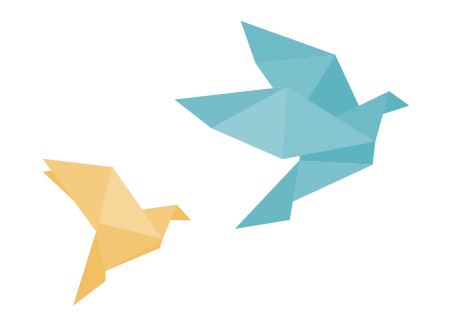A few years ago, way before GenAI was an everyday reality, I worked with a company that had built an impressive chatbot for the time. It could hold real, natural conversations with customers and serve a variety of use cases. The technology was genuinely strong, and they knew they had something valuable. So they did what most startups do at first: they cast a wide net. They pitched it to companies across industries, sizes, and use cases. A few signed on. Things looked promising.
But as they moved from early traction to a more systematic go-to-market approach, cracks started to show. The definition of “target customer” was too vague. Marketing didn’t know who they were talking to. Sales couldn’t explain what made the product uniquely valuable. The product team didn’t know which use cases to prioritize. Everyone was moving and working hard to succeed, but as they were not working in the same direction, results were hard to achieve.
That’s when they brought me in. When I work with companies to sharpen their value proposition or refine their product strategy, we always start with the same raw material: their existing customers. Who they are. Why they chose the product. What they’re actually getting from it. And almost every time, we discover the same thing. Buried inside that diverse customer list is a more focused, more valuable opportunity.
In this case, we found a specific type of business that truly needed what the chatbot could do – and would pay for it. We saw that these were the customers who engaged more easily and willingly with the company, and were happier customers eventually. So we decided to focus the product and go-to-market efforts on that one vertical. It brought clarity to the strategy and momentum to the team.
But as we finalized the new pitch, someone on the founding team asked the question I always know is coming:
“But what if a prospect wants X?”
And “X” doesn’t fit the new value proposition, which might mean the answer is that they’re not your customer.
Discussing it upfront is actually a good signal that you are committed to this strategy and it’s not just cheap talk.
But committing to something and sticking to it over time are very different things. It’s scary to say no, although in many cases it is not only the right thing to do but also the only thing that can save your startup.
So here is a quick guide that will help you say no and sleep well at night.

You Don’t Have to Give Up on Your Existing Business
In the business world, every customer counts. As a startup, you usually work so hard to bring each customer, that the thought of losing them is literally painful. So the first thing for you to understand in order to be willing to take this step is that it doesn’t mean giving up on your existing customers. Not even the ones currently in the pipeline.
While we are developing and executing the refined strategy, the outer cycles of the company can continue with what they currently have, simply because that’s what they have. I am a big fan of testing your new strategy quickly and putting your refined value proposition in front of potential customers as early as possible to get feedback and initial validation for it. But selling it end-to-end and relying on it for your business would take time, and you still need to bring in revenue while the new direction is in the works.
Instead, you should gradually move upcoming prospects towards the new pitch and product offering. Take baby steps until you are ready to take a bigger one.
If It Worked So Well We Wouldn’t Be Here
Giving up on the bird in your hand for two birds in the bush is really hard, and is rarely a good idea. But if we got up until here, it usually means that there is something really wrong with the bird in your hand. Facing a hard decision, people usually tend to forget how they got here and feel only the pain of losing something they already have. But if what you have doesn’t work, they should overcome their fear. Repeat it constantly with the team to keep them going in the right direction.
Your actions can vary depending on what exactly is wrong with your existing choice of the target market. Here are a few examples:
The Bird Is Not Really in Your Hand
That is, these prospects are not likely to become customers anyway. If the problem you started with was that you couldn’t convert well in your previous target audience, continuing to try won’t help you much.
If this is the case for you, you shouldn’t waste sales and marketing resources on trying to sell something that isn’t really selling, or to the wrong audience. It most likely will continue not to work, so any effort you put into it is truly wasting your time.
The best thing to do here is to understand that they were never really yours and let go without fear.
There Aren’t Enough Birds Like This One
That is, you can have a number of customers for this specific use case, but the potential is very limited. In your market analysis, you realized that this target market is simply not big enough to get you to where you need to be to justify your funding and demonstrate the desired growth rates.
If this is the case for you, you probably want to continue serving these prospects and convert them to customers where it’s easy. However, understanding that this is not where your bread and butter would come from in the future, you shouldn’t make large sacrifices to win these deals.
The Bird Needs Too Much Care
That is, to support these customers, you need to invest a lot of dedicated effort. It can be that your CAC is too high to justify the price you are charging, that a lot of one-off developments need to be done for each customer to be happy, or even that the technology is so heavy that you simply can’t move fast enough.
If this is the case for you, you should consider carefully before adding more birds to look after, since each comes with a price. At some point, you also want to stop feeding the birds you already have, realizing that some of them will go look for food elsewhere (that is, stop making one-off developments, even at the cost of losing existing customers). Of course, to do it safely, it is best to have the alternative already live and bringing in revenue.
Create a Winning Product Strategy
The best way to help yourself feel confident in letting go of your existing business is to have a great alternative.
With a solid, structured, and coherent product strategy – even before it is actually executed – you get to see step by step how you are going to achieve business success. Seeing it so clearly is so tempting that many of the companies I work with are already waiting to be able to shift everyone’s efforts to work solely on executing the new strategy.
But you need to do it responsibly.
We usually get there gradually and make proper validations before taking on bigger bets. It’s when you start seeing your smaller bets payout that not looking backward becomes easier and eventually a reality.











